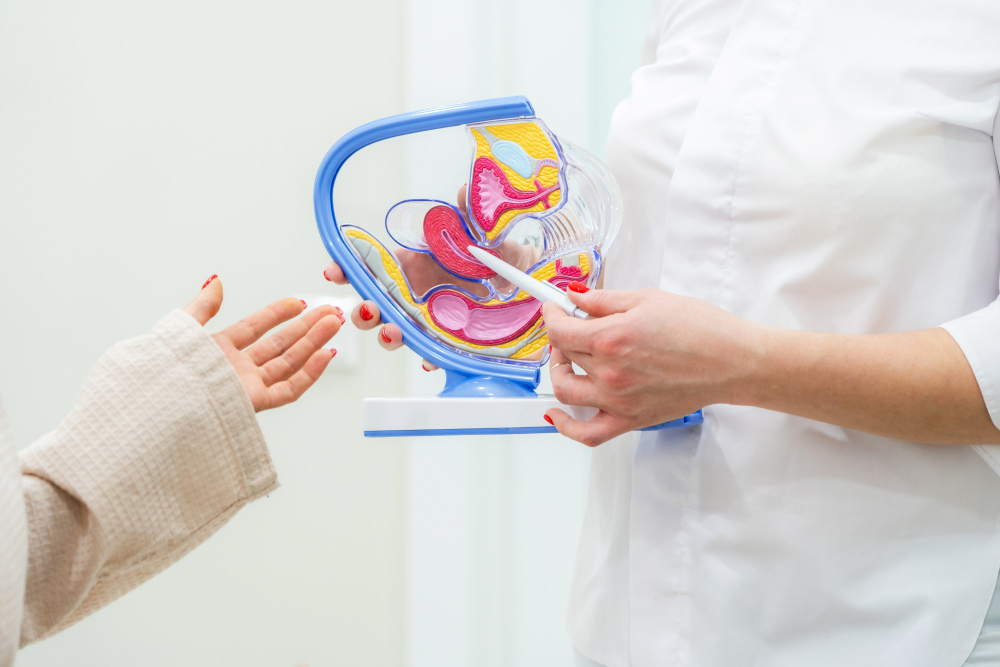

What is hysteroscopy and how is it done?
Hysteroscopy is the procedure in which the inside of the uterus is examined with a thin telescope inserted into the cervix without the need for any surgical cuts. This telescope, called a hysteroscope, is connected to a light and a camera so that the uterus can be seen.
Prior to hysteroscopy, specific instructions may be given about any dietary requirements. The patient, who acts in accordance with these instructions, should be ready for the operation on the date and time of the appointment.
Blood tests should be done to make sure there are no health problems, such as infection, that could preclude hysteroscopy. If pregnancy is suspected, a pregnancy test should be performed.
Generally, anesthesia is not used during hysteroscopy. Since the procedure progresses quickly and no incisions are made, there will be no discomfort. However, painkillers can be given according to needs or preferences, and the cervix may need to be anesthetized. If an operation such as removal of fibroids will be performed, general anesthesia can be applied.
The patient's legs are extended with supports, privacy is protected with a cover. The procedure requires access to the vagina, cervix, and uterus. The vagina opened with the help of a speculum will be cleaned with an antiseptic solution. The hysteroscope is inserted and advanced to the uterine cavity to view all the walls. After insertion of the hysteroscope, liquid or gas is injected to inflate the uterine cavity and provide better visualization. The camera will transfer images to the monitor to help it identify anomalies. If any problems in the uterus are seen it can be noted or treated. The instruments required for additional surgeries can be used by passing them through the thin channel in the hysteroscope. These instruments help remove abnormal tissue to be sent for pathological testing. In more complex cases, a procedure such as the abdominal laparoscopy procedure may be added to simultaneously view the outside of the uterus. When the procedure is complete, the hysteroscope instrument is removed from the uterus.
Hysteroscopy can be completed in about 30 minutes.
Why is hysteroscopy done?
Common problems that can be diagnosed or treated with hysteroscopy include:
Unusual bleeding in the vagina,
Heavy menstrual periods
Bleeding between periods,
Polyps,
Fibroids,
Factors that make it difficult to get pregnant
Bleeding after sexual intercourse
Recurrent miscarriages,
Treating scar tissue in the uterine lining,
Finding a dislodged spiral and pulling it out of the body,
Obstruction in the fallopian tubes
Congenital uterine abnormalities,
Recurrent IVF failures
Abnormal pap smear test results,
postmenopausal bleeding,
Removal of the endometrial lining.
Some conditions can make hysteroscopy more difficult or impossible, such as abnormal position of the uterus, obstruction of the cervical canal or uterine cavity, scarring of the cervical opening.
Is hysteroscopy painful?
Every woman's pain threshold is different. Some women will feel no pain at all, while others will experience severe cramps. An appropriate anesthesia method can be applied by notifying the healthcare professional when there is an uncomfortable situation.
Will there be menstrual bleeding after hysteroscopy?
Recovery time after hysteroscopy varies according to the type of anesthesia applied. If general or local anesthesia is used, blood pressure, pulse and oxygen level are monitored until the patient's condition is stable. No special care will be needed after hysteroscopy if anesthesia has not been administered. After the effect of the anesthesia is completely gone, the bladder can function normally, food can be eaten and liquids can be consumed. Unless a different recommendation is made, it is possible to shower on the same day and take a bath the next day.
Pain, cramping and vaginal bleeding may occur within a few days following the day of the procedure. In order not to increase the possibility of bleeding, no medication should be taken other than those recommended by the healthcare professional. Due to the gas given during the operation, digestive system problems will end in approximately 24 hours. If fever, severe abdominal pain or heavy vaginal bleeding occurs, a doctor's control is required.
The menstrual period after hysteroscopy may occur at a different time than expected. However, after this change, it will return to the normal looping pattern.
It may be necessary to avoid sexual intercourse for 1-2 weeks after the procedure to avoid any complications.
Is hysteroscopy risky?
After the question of what is hysteroscopy and how it is done, the most curious factor is the risks of hysteroscopy. Hysteroscopy is known to be a very safe procedure. However, as with all medical procedures, risks can occur, albeit rare.
Some of the main risks associated with hysteroscopy include:
Damage to the uterus: Extremely rare. If such a problem occurs, another operation may be required to repair it.
Cervical damage: It is a small risk and can usually be treated with simple methods.
Excessive bleeding during or after the procedure: May occur rarely in procedures performed under general anesthesia. In advanced cases, a hysterectomy operation associated with complete removal of the uterus may be required.
Uterine infection: Uterine infection causing vaginal discharge, fever and heavy bleeding; can be treated with antibiotics.
Fluid absorption: Complications that can occur with hysteroscopy include the risk of fluid absorption into the bloodstream. During surgeries where abnormalities such as fibroids are removed, absorbing too much fluid can lead to a salt imbalance in the bloodstream. This condition can cause wet lungs or swelling of the brain. These risks, which are very serious complications, can be avoided by monitoring the amount of fluid lost during the procedure.

Gynecology
Vaginismus
Pregnancy and Birth
Gynecology
Pregnancy and Birth
Genital Aesthetics
Gynecology
Gynecology
Genital Aesthetics
Gynecology
Pregnancy and Birth
Gynecology